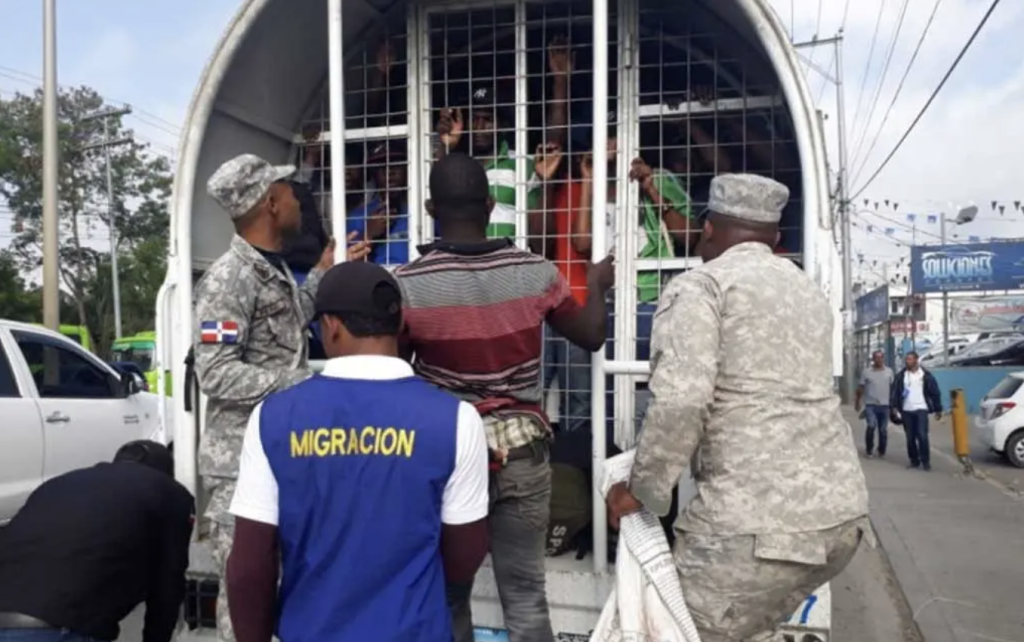
Journalist Jorge Gonzalez of El Nacional typifies what indigent and undocumented Haitians go through as the violence and chaos in Haiti expels them to cross the 391 km land border in search for the living they cannot make at home.
He tells the story of 24-year old Haitian Ariel Jean, a lanky young adult, who has found work here in construction. He tells of the constant fear that accompanies Jean now that the Migration Agency has stepped up efforts to curtail the increasing flow of Haitians to this side of the island.
“The clandestine life of Haitians in the Dominican Republic is a constant struggle for survival,” he writes. He writes about the many times Ariel Jean has been caught by Migration agents, and loaded on the migration van that will begin his deportation process.
Ariel Jean says he was 15 years old when he sought out a relative who had been living in Dajabón, the border province, for some time.
After six months of working in agriculture, construction, and even trading in Dajabon, he managed to save up and secure a contact who promised him a clandestine passage to the promised land—Santo Domingo, the Dominican Republic’s economic and commercial hub—for RD$7,000.
In the capital, Jean would find refuge in Villas Agrícolas, where his limited Spanish mixed with Creole allowed him to communicate easily. He found a compatriot who took him in, joining other undocumented Haitian immigrants in an abandoned old house.
Construction became his salvation—hard labor under the scorching sun but a steady source of income that enabled him to send remittances to his family in Haiti and save up. He learned that bribes were often necessary to get out of the Migration Agency’s Haina Detention Center, which were at RD$15,000 at the time.
Over the next decade, Jean grew familiar with the city, its customs, rhythms, and dangers. The ever-present shadow of migration authorities forced him to live in constant alertness, always prepared to pay a bribe to return across the border. Foreign Minister Roberto Alvarez has said the border is “a revolving door.”
El Nacional reports that Ariel has been detained and deported to Haiti five times now. Poverty, lack of opportunities, and an increasingly hostile and hopeless homeland pushed him back onto this path for survival.
The bribe he pays to military officials guarantees his illegal re-entry into Santo Domingo, where he resumes his clandestine life working in construction, always with one eye on the next raid. His life is an endless cycle between the nation that saw his birth and indifferently welcomes him back, and the country where he lives illegally. “Detention, deportation, and paying the bribe” no longer taste like bitter defeat but rather a payment for his illegal existence in a country where he’s just another undocumented immigrant.
Contrary to what one might think, Ariel Jean is not the hero of this story nor a victim. He is a product of the circumstances created by a border between two countries—one offering security, economic growth, and social stability, and the other lacking all these things. Over the decades, little has been done to resolve the situation in Haiti that has only been getting worse.
The El Nacional story says that while DGM authorities share the official deportation numbers, and the National Army and Specialized Border Security Corps (CESFRONT) claim the border is sealed, the country remains overrun with undocumented immigrants. Every day, vehicles packed with Haitians are intercepted.
In 2024, a total of 276,215 undocumented individuals were repatriated to Haiti from the Dominican Republic. This already significant figure has been followed by an even sharper rise in deportations in the first four months of 2025. According to official data, 119,003 Haitians were deported during this period, marking a 71% increase compared to the same timeframe in 2024.
The El Nacional journalist wraps up his story with reality. While the authorities mention the deportations, there is a notable absence of statistics regarding the number of individuals who have entered the country illegally so far this year, leaving a critical gap in understanding the full scope of migration dynamics between the two nations.
Read more in Spanish:
El Nacional
22 May 2025

